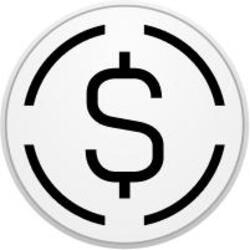Foreign currencies are advertised in a window in Times Square, one of New York’s and the nation’s top tourist attractions, on March 28, 2025, in New York City.
Spencer Platt | Getty Images
The rollout of U.S. President Donald Trump’s tariffs regime is dampening sentiment toward the dollar and prompting investors to look elsewhere for their foreign exchange (FX) trades, strategists told CNBC.
The dollar index, which measures the value of the greenback against a basket of major rivals, was little changed on Wednesday morning. The U.S. currency began a steady rise in late 2024 that peaked in mid-January — however, the dollar index has steadily pared some of those gains in recent weeks.
The dollar has historically been widely seen as a safe haven asset for investors, given its status as the world’s reserve currency and dominance in international borrowing, payments and trades. When the dollar strengthens, U.S. exports become more expensive, while imports become cheaper. The greenback’s value can also impact global monetary policy, capital flows and corporate earnings.
“Currency trader positioning is turning bearish on the dollar and becoming more bullish on the currencies of major U.S. trading partners as the United States prepares to launch a multinational trade war,” said Joseph Brusuelas, chief economist at RSM U.S., in a research note published Monday.
Euro expected to rise
Brusuelas pointed to trades in the euro as a signal of “erosion of confidence in the dollar.”
“From late October until the first week of March, the majority of euro positioning was long the dollar,” he said in Monday’s note. “But for three weeks now, net positioning is long the euro.”
Jordan Rochester, head of FICC strategy and executive director at Mizuho Bank’s EMEA arm, told CNBC he held “a down then up view” on the euro against the dollar. He sees the euro falling to somewhere between $1.06 and $1.07 before climbing to $1.12 or higher by the end of the year.
“I expect this market to price in ‘maximum pain’ once we know the details of the tariffs,” he said in an email, arguing that this presented an “opportunity to take the other side.”
“Tariffs [are] unlikely to get worse once fully priced in and [the] EU and others [are likely] to respond with … retaliatory tariffs of their own which will lead to a recovery later on,” he said.
Athanasios Vamvakidis, global head and managing director of G10 FX strategy at Bank of America, told CNBC he saw downside ahead for the dollar, despite expecting tariffs to have an immediate positive impact on the greenback.
“For the dollar we have been and we are still bearish for the year as a whole,” he said on a call. “We believe the market is already pricing selective tariffs, but it will get tariffs across the board.”
He told CNBC that the dollar could rally this week in the immediate aftermath of tariffs coming into effect, but noted that this “most likely will be an opportunity to sell.”
“Beyond the very short term, there are two channels that should lead to dollar weakness,” Vamvakidis explained. “First, when you have the U.S. against the rest of the world in a trade war scenario, then the U.S. eventually will suffer more because … when you compare it with the rest of the world, the rest of the world is larger. Second, tariffs suggest stagflationary risks — and right now, the market is very concerned about such risks.”
Like Brusuelas and Rochester, he predicted that the euro would eventually be boosted by Trump’s trade war. While the U.S. contends with a policy mix that will likely be negative for its currency, Europe is focusing on “growth friendly policies,” Vamvakidis said.
“Germany announcing a massive fiscal stimulus, Europe announcing massive spending on defense, plans for structural reforms to focus on growth and competitiveness,” he said. “So far these are plans, but we didn’t even [have] such plans before, and coming from Germany, the economy with the weakest growth in the euro zone and the largest economy in the euro zone and the tightest fiscal policy in the euro zone, this is really a game changer.”
Vamvakidis said his team sees the euro reaching $1.15 this year and $1.20 in 2026.
Sterling bulls
Bank of America’s Vamvakidis also argued the British pound has the potential to rise as Trump’s tariffs regime comes into play, noting that the U.S. President has aimed tariff threats at the EU while hinting that Britain could be spared.
“Also, there is positive seasonality for sterling in April,” he said. “So in the short term, we should see sterling doing relatively well. For the year as a whole, we also like sterling against the dollar. Against the euro it depends on the implementation of EU reforms.”
In a note at the end of March, analysts at Maybank upwardly revised their forecasts for the British pound, saying they now see sterling hitting $1.26 by the end of the year before rising to $1.31 in early 2026. On Wednesday morning, the British currency was trading at around $1.29 against the U.S. dollar.
“We … turn more bullish on the GBP with its plans to increase defence spending, maintain fiscal discipline and easing stagflation risks,” they said. “We maintain our belief that the GBP will be more resilient on the basis that the UK as a services-oriented economy is less likely to be influenced by Trump trade policies. As a close ally of the US, it will probably also be spared from significant actions by the Trump administration. This is in spite of an external environment that remains highly uncertain and challenging.”
Australia, New Zealand currencies could be boosted
The Maybank analysts also predicted upside for the New Zealand dollar, giving the currency a target of $0.58 against the greenback by the end of 2024 — a 2.1% rise from current levels.
“A rounding bottom has formed for the NZDUSD which portends further recovery,” Maybank’s analysts said, adding that the outlook for the currency remained positive as New Zealand’s economy recovered and the pace of monetary easing was likely to slow.
“Both Australia and New Zealand also have stronger balance sheets than most other Western countries — in particular much lower debt to GDP ratios,” Alex King, a former FX trader and founder of personal finance platform Generation Money, said via email.
“This means they have much more headroom for potential stimulus measures of their own and [it’s] another factor making them both attractive places for investors, which helps strengthen their currencies.”
He added that both countries’ economies were “much less connected to the trade war narrative.”
“To combat the effect of tariffs, China is looking at stimulus measures to boost its own economy and this is seen as a positive for the economies of both Australia and New Zealand, both of which tend to run trade surpluses with China,” King told CNBC.











































